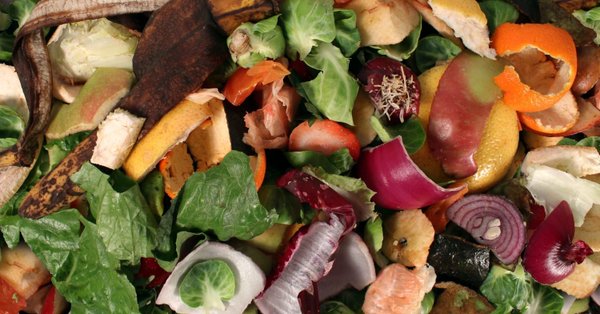By Byron Mutingwende
Trinity Musarurwa tenders her lettuce in the community-owned garden in Masiyarwa area, Zvimba District of Mashonaland West Province. She has five beds of her own in the large piece of land fenced for a garden in which a borehole was also drilled, courtesy of the benevolence of a non-governmental organisation’s donation.
Musarurwa paid homage to the Community Capacity Building Initiative Centre for Africa (CCBICA) for providing community members with education on the advantages of crop rotation, not only to soil fertility but to human nutrition.
“In the past we used to grow only maize and vegetables like Rape and Covo species but CCBICA taught us to grow other crops like cowpeas, beans, beetroot, onions and tomatoes so as to diversify the crops to realize different nutritional benefits. Apart from making profits from the sale of these various crops we grow all-year round because of the perennial availability of water, our diet is more balanced,” Musarurwa says, exuding an aura of confidence.
Rodreck Dick, the CCBICA Director said that his organisation sensitises these smallholder farmers on the importance of the four-star diet comprising of legumes, staples, fruit and vegitables as well as animal source foods.
In the same district, groups of other women specialize in rearing livestock like chickens, rabbits, goats and quelea birds.
Shylene Motsi (35), revealed that she supplies a popular food joint in the Harare Showgrounds some 300 quelea birds every fortnight.
“The quelea birds’ meat is famous for its high nutritional value and is also believed to enrich fertility in men. These may be myths but it is good for our business. One quelea bird is sold for $1, 50 so for $300 birds I rake in $450. We should increase production because the demand is very high,” Motsi said.
In his presentation on the Renewed Efforts Against Child Hunger (REACH) and under-nutrition, Munhamo Chisvo a food expert, said there was a need to promote the production, marketing and consumption of diversified and improved climate-smart cultivars of nutrient-dense crops. He was speaking at a meeting to scale-up nutrition held recently in Harare.
“Smallholder, rural-based farmers should be encouraged to grow plant protein, fruits, dark green and yellow vegetables, under-utilised cereals, vegetables, pulses, wild foods as well as bio-fortified crops. They should also rear small livestock that are adaptable, have high turnover, and are a good source of protein. These include goats, indigenous chickens and guinea fowls, just to mention a few,” Chisvo said.
He called on stakeholder to promote aquaculture production, marketing and consumption among communities with access to water bodies as well as viable cropping programmes for irrigation schemes (including safe use of irrigation water).
The Wadzanai Community Development Trust in Domboshava was hailed for using solar dryers to preserve fruits and vegetables for future consumption. That is a form of non-sensitive value addition and beneficiation, which could be complemented with food fortification to ensure positive nutritional outcomes.
“It is important to strengthen the link between agricultural research and extension for nutrition incorporating promotion of pro-nutrition indigenous knowledge systems and foods, and preservation methods. It is also equally important to enforce food safety standards for both domestic and imported foods. Farmers should use agricultural practices that do no harm to nutrition. They should avoid the planting of food crops like cucumbers and melons in cotton fields and the use of banned chemicals like DDT in maize for control of armyworm,” Chisvo said.
According to Kudakwashe Zombe, the Zimbabwe Civil Society Organisations Scaling Up Nutrition Alliance (ZCSOSUNA) advocates for an increased focus on nutritional outcome in national policies and programmes, as well as works to ensure that Civil Society efforts to tackle malnutrition are aligned with national plans.
Nester Gumbo, the Chief Specialist – Agricultural Extension Services, of the Ministry of Agriculture, Mechanisation and Irrigation Development said malnutrition is a complex issue with multiple causes, hence the need for stakeholders to work together to address the problem.
“According to Lancet, even if we focus on 10 proven nutrition-specific interventions to a scale of 90% coverage, we could reduce stunting by only 20% and severe acute malnutrition by 60%. The rest would have to be through nutrition sensitive agriculture. We therefore need to focus on agricultural policies and programmes as well as addressing food system challenges affecting our diets,” Gumbo said.
Gumbo called for the development of nutrition sensitive agriculture modules for colleges coupled with the training of Crop and Livestock Production Extension workers on nutrition sensitive agriculture.
According to the International Food Policy Research Institute (IFPRI), global hunger levels have fallen more than a quarter since 2000, but more recent rising hunger scores of several countries in the 2017 Global Hunger Index (GHI) underline how uneven this progress has been and how precarious it is to maintain.
“The results of this year’s Global Hunger Index show that we cannot waiver in our resolve to reach the UN Sustainable Development Goal of zero hunger by 2030,” said Shenggen Fan, director general of the International Food Policy Research Institute. “We have made great progress toward that goal but indications that this progress is threatened emphasizes the need to establish resilience in food systems. We must provide immediate aid to those areas facing the most severe crises, such as famines, and construct policies at the international and national levels to address the structural issues that create persistent food insecurity.”






